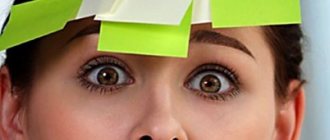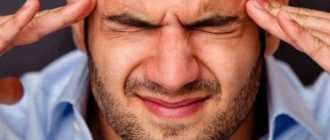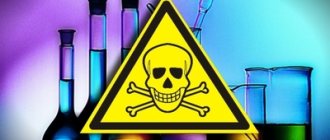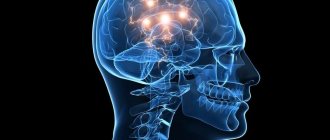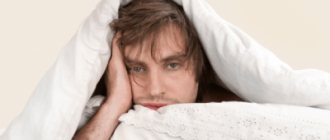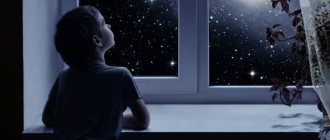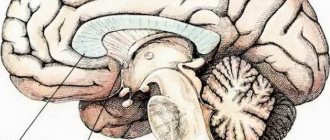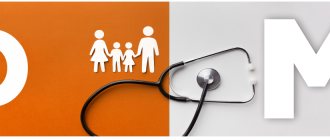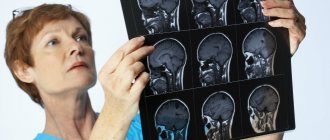| Endogenous depression | |
| ICD-10 | 33.233.2, 33.333.3, F33.38 |
| ICD-9 | 296.19296.19 |
| OMIM | 608516 |
Endogenous depression
is an endogenous mental disorder characterized by a depressed, depressed mental state
(book),
low mood, motor inhibition (or motor excitation) and slow thinking caused by “internal” reasons. Some researchers believe that the reasons underlying the problem are a violation of metabolic processes in the brain, that is, a violation of the formation of serotonin and norepinephrine or biogenic amines. However, there is no scientific evidence that sufferers of endogenous depression suffer from “serotonin deficiency” or “chemical imbalance in the brain”[1]. The diagnosis of endogenous depression is made by psychiatrists without any biological tests to identify impaired metabolic processes in the brain, but only on the basis of the patient’s complaints and/or observation of his behavior.
It is believed that endogenous depression occurs without the presence of external circumstances and outside influence, not depending on past or current events in the life of an individual. No favorable moments: positive news, pleasant events, activities that normally bring pleasure - have or have little effect on a person’s mood and well-being. Individuals suffering from endogenous depression are usually not characterized by tearfulness, but they are completely absorbed in painful ideas of self-criticism, self-blame and self-deprecation. It is taking these facts into account that psychiatrists distinguish endogenous depression from a psychogenic disorder and make an appropriate diagnosis.
In ICD-9, endogenous depression was coded 296.19 (“unspecified endogenous depressive conditions”)[2]. ICD-10 no longer uses the term “endogenous depression”, but among the various types of depression and its gradations of severity, its actual equivalents are identified: F33.2 - recurrent depressive disorder, current severe episode without psychotic symptoms, F33.3 - recurrent depressive disorder disorder, current episode of severe depression with psychotic symptoms and F33.38 - other recurrent depressive disorder, current episode of severe depression with other psychotic symptoms[3].
This disorder is characterized by periodic relapses (exacerbations), which can occur independently, without any apparent external cause. Endogenous depression can be bipolar (the depressive phase of bipolar affective disorder) or unipolar.
Treatment
In the treatment of affective disorders, mood stabilizers, antipsychotics and antidepressants are used. Normothymic drugs (lamotrigine, lithium drugs, carbamazepine, valproic acid, etc.) have antimanic properties and can significantly mitigate the severity of the next affective phase or prevent its onset. Antipsychotic drugs are used to relieve manic states, states with psychomotor agitation, as well as to treat mania and depression with psychotic symptoms (in the form of hallucinations and delusions).
Classification
Affective disorders can develop in several scenarios:
- Monopolar depressive type;
- Monopolar manic type;
- Bipolar;
- Bipolar with a predominance of depression;
- An atypical course against the background of a combination of various mental disorders.
The most common and widely studied psychoses are manic-depressive disorder (bipolar affective disorder) and major depressive disorder (clinical depression). MDP is characterized by the presence of both manic and depressive periods. There is no manic phase in the structure of the latter. The disease can also develop as a type of unipolar psychosis, in which signs of depression do not develop at all.
Affective insanity
Bipolar disorder is manifested by alternating episodes of increased and decreased emotional state, as well as mental and physical activity. The clinical picture of the disease, the number and duration of phases are unpredictable and individual.
The manic phase is accompanied by inspiration, an excessively good mood (for no reason), and an inadequate assessment of one’s own abilities. Concentration is preserved, but the productivity of the thinking process decreases.
The manic stage includes several stages:
- Hypomanic. Symptoms include elevated mood, high physical activity, talkativeness with active gesticulation. The stage is accompanied by sleep disturbances and a decrease in its duration.
- Severe mania. Active behavior and gaiety are interrupted by short bouts of anger. The behavior is characterized by constant distractibility, which makes it difficult to maintain a dialogue with the patient. A person highly evaluates himself and his prospects for the future - against this background, delusions of grandeur develop. Sleep duration can be about 3-4 hours.
- Stage of manic rage. Manifested by excessive motor activity, speech consists of individual words or syllables - communication becomes impossible.
- Motor sedation. Good mood and high speech activity are maintained, but fussy behavior and anxiety are noticeably reduced.
- Reactive stage. The patient's condition returns to normal.
The depressive phase occurs with the opposite symptoms: deterioration of mood, inhibition of motor and mental activity.
Against the background of the classic depressive manifestation - a state of melancholy, pronounced anxious-phobic manifestations and hysteria may occur. Characteristic is a feeling of one’s own guilt (usually unfounded) or blaming others.
Autonomic disorders are observed: hyperhidrosis, tachycardia, pressure surges.
This phase consists of 4 stages:
- Initial. The patient experiences a decline in mood, mental and physical activity decreases. Sleep disturbances include anxiety and difficulty falling asleep.
- Increasing manifestations. Increasingly deep deterioration in mood combined with anxiety, a significant decrease in physical and mental activity, and retardation of movements.
- Severe depression. Intensification of all symptoms: melancholy, anxiety, quiet and slow speech, lack of interest in anything. At this stage, delusional ideas and “voices” may appear, and the risk of suicide increases.
- Reactive phase. A gradual decrease in the severity of symptoms with possible persistence of asthenia for some period of time. Sometimes it can be combined with motor activity and talkativeness.
The lives of many millions of people suffering from bipolar personality disorder seem to be divided into two different realities: elation and depression. Why does this condition develop and can it be cured?
Unipolar psychosis
With unipolar psychosis, one of the possible phases is present.
In the manic form, there is an increase in mood and activity, an acceleration of the thought process, and the need for constant communication increases. There is a high probability of becoming addicted to alcohol or drugs. In general, the state is characterized as euphoria. The duration of this period can be from 4 months to a year. Observations show that the seasonality factor is of great importance - exacerbations are more often recorded in autumn and spring.
Depressive form is often diagnosed in people after 30 years of age. The duration of depression and loss of strength and mood can last up to six months. Symptoms are manifested by the “depressive triad”: low emotional background, motor and mental retardation.
Notes
- ↑ 1 2 3 Sadock, Benjamin J.
Kaplan and Sadock's Synopsis of Psychiatry: Behavioral Sciences/Clinical Psychiatry. — 9th. - Lippincott Williams & Wilkins, 2002. - P. 534, 548, 552. - ISBN 0781731836. - Tiganov, 1999, p. 60.
- Tiganov A. S., Snezhnevsky A. V., et al.
Affective syndromes // Guide to psychiatry / Ed. Academician of the Russian Academy of Medical Sciences A. S. Tiganov. - M.: Medicine, 1999. - T. 1. - P. 40-46. — 712 p. — ISBN 5-225-02676-1. - Parker, Gordon.
Melancholia: A disorder of movement and mood: a phenomenological and neurobiological review. - Cambridge: Cambridge University Press, 1996. - P. 173. - ISBN 052147275X. - ↑ 1 2 3 4 5 6 American Psychiatric Association.
Diagnostic and statistical manual of mental disorders, Fourth Edition, Text Revision:
DSM-IV-TR
. - Washington, DC: American Psychiatric Publishing, Inc., 2000. - P. 943. - ISBN 0890420254. - Ruta M Nonacs. eMedicine - Postpartum Depression
- Traffanstedt MK, Mehta S., LoBello SG
Major Depression With Seasonal Variation Is It a Valid Construct? (English) // Clinical Psychological Science. — 2016-01-19. - P. 2167702615615867. - DOI:10.1177/2167702615615867. (unavailable link) - A.A. Nazarov.
Features of the treatment of affective disorders during the abstinence period in alcoholism (Russian).
psychiatric-clinic.ru
. psychiatric-clinic.ru (14.06.17). Retrieved July 9, 2020. - Carta, Mauro Giovanni; Altamura, Alberto Carlo; Hardoy, Maria Carolina et al. (2003). “Is recurrent brief depression an expression of mood spectrum disorders in young people?” European Archives of Psychiatry and Clinical Neuroscience 253
(3): 149–153. DOI:10.1007/s00406-003-0418-5. - Rapaport MH, Judd LL, Schettler PJ, Yonkers KA, Thase ME, Kupfer DJ, Frank E, Plewes JM, Tollefson GD, Rush AJ (2002). "A descriptive analysis of minor depression". American Journal of Psychiatry 159
(4): 637–43. DOI:10.1176/appi.ajp.159.4.637. PMID 11925303. - Tiganov, 1999, p. 608.
- Experts ponder link between creativity, mood disorders - CNN.com
- Jamison, K. R.
Touched with Fire: Manic-Depressive Illness and the Artistic Temperament. - New York: Free Press, 1996. - ISBN 978-0684831831. - Kaufman, J. C. (2001). "The Sylvia Plath effect: Mental illness in eminent creative writers." Journal of Creative Behavior 35
(1): 37–50. ISSN 0022-0175. Retrieved 2011-01-26. - Bailey, D. S. (2003). "Considering Creativity: The 'Sylvia Plath' effect." Monitor on Psychology
(APA)
34
(10):42.
Treatment of affective psychoses
There are 2 categories of methods: some are aimed at combating manifestations of affective psychosis in the acute stage, others are aimed at preventing the development of relapses and increasing the duration of the period of remission (intermission).
In case of unipolar depression, it is advisable to use sedative antidepressants. Second-generation drugs that combine tranquilizing and thymoleptic effects are recommended for use. The use of tricyclic antidepressants is not as effective; they are used much less frequently and, if prescribed, they are prescribed in small dosages. Lithium intake has also been shown to reduce the incidence of suicide.
Treatment begins with high doses, which are then reduced. When determining the dosage, it is necessary to calculate it so as to prevent a phase switch to the opposite one under the influence of medications. Such a change (without a period of remission) gives an extremely unfavorable prognosis.
At the stage of mania, antipsychotics are used. For monopolar psychosis, sodium salts are included in therapy.
The World Health Organization recommends continuing treatment with antidepressants for another six months after obtaining the required therapeutic effect. This allows you to consolidate the result.
The difficulty is that the patient does not always understand that he needs to seek help from a specialist. Periods of mania during affective psychosis are accompanied by excellent health, and people try to survive the mild depressive phase on their own. Usually, when it becomes noticeable from the outside that a person needs help, serious medical intervention is required, and most often, immediate hospitalization.
Diagnostics
ICD-10
Diagnosis 25. is made when the following groups of criteria are met:
- there are signs of affective disorders (F30-F32);
- the presence of at least one of the following symptoms for at least 2 weeks: auditory hallucinations in the form of extraneous voices commenting or conducting dialogues;
- delirium of control and influence, a feeling of “done” thoughts, sensations, movements;
- sensations of telepathy, that is, the reception or transmission of thoughts at a distance, their openness or withdrawal;
- broken speech and neologisms;
- persistent delusions that are not characteristic of the patient’s subculture;
- frequent and transient appearance of catatonic symptoms;
Types of Schizoaffective Disorder
- 25.025.0 Manic type. The diagnosis is made for schizoaffective disorder with a manic background (meeting the criteria for mania 30.130.1).
- 25.125.1 Depressive type. The diagnosis is made with schizoaffective disorder on a depressive background (meeting the criteria for moderate or severe depression 31.331.3-4).
- 25.225.2 Mixed type. The diagnosis is made with schizoaffective disorder mixed with bipolar affective disorder (meeting the criteria for bipolar disorder, current mixed episode 31.631.6).
- 25.825.8 Other schizoaffective disorders.
- 25.925.9 Schizoaffective disorder, unspecified.
One part of the researchers regards the mixed type of schizoaffective disorder as an atypical form of bipolar affective disorder[5], and the other as a relatively benign form of schizophrenia (“circular schizophrenia”)[6].
Affective pathology syndromes. Manic syndrome
This section will describe apato-abulic, manic syndromes, moria and depressive syndrome.
Apato-abulic syndrome . This is a combination of apathy, indifference, indifference with a sharp weakening or complete loss of motivation for activity, interests, spontaneity, inactivity, uninterrupted and under the influence of external stimuli. It is observed in a simple form of schizophrenia and, according to some authors, constitutes the core of the symptom complex of this disease.
Manic syndrome. It is characterized by a classic triad of symptoms: unmotivated increase in mood - hyperthymia; accelerated pace of associative processes - tachyphrenia; increased urges to perform and increased activity - hyperbulia.
| | Affective personality disorders require immediate consultation with a psychiatrist |
Hyperthymia is a serene, elevated, sunny, joyful, jubilant mood with unclouded optimism, sparkling, infectious fun, an exciting experience of elation and boundless happiness, enthusiasm, hyperproduction of appropriate expressive actions. Negative emotions (fear, anxiety, dejection, etc.) do not arise, but this cannot be said about such emotional manifestations as dissatisfaction, embitterment, anger or hatred.
Tachyphrenia is an acceleration of the flow of associations with an abundance of easily arising thoughts and ideas, a superficial (associative, not logical) nature of judgments, increased distractibility, and hypermnesia. The content of thinking corresponds to the dominant background of the mood: witticisms, puns, anecdotes, funny stories, poems, memories of pleasant or funny episodes of life. Really existing problems are ignored or viewed in the context of a rosy mood. Self-esteem is increased, their abilities and capabilities are clearly exaggerated.
Hyperbulia is excessive, excessive activity with the immediate implementation of many emerging impulses to activity, frequent switching from one activity to another, as a result of which things remain unfinished, an abundance of all kinds of projects, plans and intentions. Increased need for communication. Patients are talkative, interfere in everything, rearrange their affairs, make numerous purchases, propose and try to implement various changes at work, pay visits, write poetry, call, surround themselves with a lot of new acquaintances, etc.
The manic effect is accompanied by obvious vital changes: patients do not experience fatigue, malaise, or unpleasant physical sensations (the exception is relatively rare cases of so-called hypochondriacal mania). Characterized by a feeling of complete physical well-being, a surge of strength and energy. Many patients feel rejuvenated, freed from the “yoke of age,” as if “born again.” Sleep is disrupted: the daily sleep requirement is sharply reduced. Sexual desire and appetite increase. Autonomic and neuroendocrine disorders are observed: increased heart rate, breathing, tendency to arterial hypertension, hypersalivation, increased skin turgor, weight loss, shiny eyes, etc. In women, the menstrual cycle is disrupted.
There are four degrees of severity of manic affect.
In the initial stage of mania - cyclothymic - the above-described vital changes, good mood, increased activity appear, the productivity of which can even be increased. Behavior in general is not disturbed, although patients bring an accelerated, hectic rhythm to business and disturb the peace of those around them. At the stage of simple mania, external manifestations of increased mood are clear: excessive animation, excessive and unreasonable gaiety, loud laughter, verbosity, etc. Productivity decreases due to increased distraction of attention. Thinking becomes superficial, associations arise mainly based on external signs. Behavior is disrupted, and clear signs of motivational regression stand out: patients incur debts, make dubious acquaintances and frivolous connections, get involved in revelry, and abandon business. Increased self-esteem becomes apparent. The stage of psychotic mania is characterized by constant speech motor excitation and hyperproduction of expressive actions (patients sing, dance, recite, get angry, and animatedly gesticulate). Speech takes on the form of a monologue, the voice becomes hoarse.
Distractibility reaches the level of hypermetamorphosis . Thinking accelerates to a race of ideas. Elevation of mood is complemented by enthusiasm, the experience of happiness and ideas of making others happy. Self-esteem and personal plans are delusional in nature: patients are going to become celebrities, prominent figures, etc. Speech motor and motor agitation can reach the point of frenzy, incoherent speech, and disordered aggression. At the stage of manic paraphrenia, delusional ideas of grandeur appear, often absurdly fantastic. These ideas, however, are unstable; the consciousness and personality of patients are not covered by them. The content of delusional ideas reflects the undivided dominance of an optimistic worldview, a feeling of confidence in one’s extraordinary capabilities.
To those described, we should also add somatized mania, characterized by increased activity, vital well-being, increased biological drives, identification of previously hidden disturbances in the orientation of sexual desire, and psychopathic behavior. In this case, there are no obvious manifestations of affective pathology itself, although on the part of organic emotions such shifts as an aggravation of the feeling of pleasantness, increased sensations of pleasure, muscle joy, vigor, dulling of pain sensitivity and sensations of physical discomfort are noted.
Depending on the characteristics of the clinical structure of the manic syndrome, groups of simple and complex manic states . Simple ones include hyperthymic, angry, unproductive and confused mania.
Hyperthymic mania is characterized by uniform expression of all components of the manic triad. The affective state is determined by the dominance of gaiety, joyful, festive elation, enthusiasm, and jubilation. Angry mania - against the background of elevated mood, irritability, fiery temper, anger, and in some cases aggressiveness are clearly expressed or come to the fore. Unproductive mania (cheerful, inactive) - an increase in mood that is not accompanied by acceleration of thinking and increased urges to activity. Confused mania is a manic state with a sharp acceleration of associative processes up to the point of incoherent thinking.
Complex variants of the syndrome include manic states combined with acute sensory delusions of persecution, delusions of staging, acute fantastic delusions - manic-delusional syndrome , confabulations - confabulatory mania, hallucinations - manic-hallucinatory syndrome , pseudohallucinations and other symptoms of mental automatism - manic-paranoid syndrome , dreamlike stupor of consciousness - oneiric manic state, catatonic stupor - mania with stupor , speech and motor agitation with clowning, antics, mannerisms, puerility, ridiculous antics and flat jokes - mania with foolishness . Mania can be combined with truth-seeking, revealing tendencies, and prosecution of “those guilty of injustice” - a mania for litigiousness . hypochondriacal mania , and in rare cases - suicidal tendencies can be observed .
Unproductive mania and mania with stupor are also considered in the group of mixed affective states, which are assumed to arise as a result of the replacement of individual signs of one affective syndrome with signs of another (in this case, depressive).
Manic states are observed in endogenous psychoses (cyclothymia, manic-depressive psychosis, periodically and furiously current forms of schizophrenia), in the clinical structure of symptomatic, infectious and organic diseases of the brain (traumatic brain injury, progressive paralysis, tumors, etc.), epileptic psychoses . “Reactive mania” has been described, occurring in situations of stress. Most likely, we are talking here about psychogenically provoked manic states.
Back to contents

